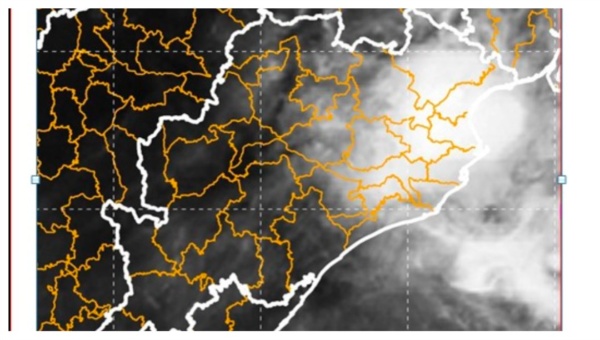
By Wanangwa Tembo, Mana: Naching’anda Health Post, an under-five clinic under Chisasu Health Centre, perches on the foot of the towering Misuku Hills about 40 Kilometres north east of Chitipa Boma. It is considered one of the hard-to-reach areas owing to its inaccessibility especially during the rainy season when the road snaking up the mountain ranges becomes impassable. Even during the dry season, the road remains bumpy and dusty, making the journey up and down the hills nightmarish and precarious.
Jack Mkhala, a health surveillance assistant (HSA) manning the facility, says transport woes impact healthcare delivery in the area, as moving supplies such as vaccines from Chisasu becomes difficult. “We do not have storage facilities for vaccines. These are kept at the mother facility at Chisasu.

This means one has to go there and get them to be administered. But with transport problems, it means if they are not collected on that material day, the administration schedule will have to be adjusted,” he says. Mkhala says this rescheduling can plant elements of doubt and despair amongst the healthcare service users who may in turn not show up again for immunisation.
“Already there are many factors that affect immunisation – some being myths and religious beliefs. So we must avoid creating more scenarios that would discourage people from coming for immunisation,” he says. With such understanding, women in the area have decided to intervene to ensure that there is proper access to healthcare services especially immunisation.
Under a grouping known as Malambwa Mother Care Group (MCG), 30 women have volunteered to drive change in the area by streamlining provision of health services at Naching’anda. Trained by Malawi Health Equity Network (MHEN), the women and at least one village chief as a patron are community volunteers who support service delivery, and advocate and mobilise resources for healthcare. Specifically, they are responsible for tracing women that default on antenatal and neonatal visits, conducting sensitisation and advocacy meetings on maternal and neonatal healthcare services and registering newly born babies and pregnant women.
Chairperson for the MCG, Saida Sichali says as volunteers, they conduct campaigns to ensure that mothers take their under-five children for immunisation against various diseases as required. “We have managed to build a clinic, spacious enough and better than what we initially had. After the clinic project, we embarked on constructing a house for the HSA but is not yet ready for occupation.
“We want the HAS to be operating from within and not in rented houses far from the facility which also affects service delivery,” she says. Sichali says the construction of the clinic and the staff house is enough evidence that the women are geared to promoting healthcare delivery in the communities. Another member of the grouping, Christina Mhango, says they are also involved in providing health and peer education on the importance of hospital deliveries, risks associated with home deliveries and importance of vaccination for under-five children.
“We go village by village looking for pregnant women, lactating mothers and children. We check their cards and those found that they missed some vaccination, we make sure that they get it. “So generally, our work involves making sure that people get vaccinated against diseases.
We mobilise people to accept vaccines and in the end have communities that are fully immunised,” she says. Mhango adds that the group’s wish is to have their under-five structure connected to the electricity grid so that they are given their own storage facilities for vaccines to counter transport hitches. Since the 2009 World Health Organisation’s (WHO) ban of traditional birth attendants conducting deliveries, various stakeholders, led by the Ministry of Health, have been conducting campaigns urging women to deliver in hospitals and pushing for acceptable immunisation rates.
The WHO launched an expanded programme on immunisation (EPI) in 1974 which marked the beginning of the global efforts to use immunisation as a public health intervention. To domesticate these efforts, stakeholders in the health sector, including the Ministry of Health, are spearheading campaigns advocating for mass immunisation of children. The current Expanded Programme on Immunisation (EPI) in Malawi prescribes basic vaccinations for diseases such as whooping cough, tetanus, measles, poliomyelitis, rotavirus, and pneumococcal infections.
Additionally, vaccines against chickenpox, diphtheria, influenza, hepatitis, and malaria are also recommended. Deputy EPI coordinator for Chitipa District, Tamandani Juma, lauds the work of MCGs saying they have helped improve immunisation status for the district. There are 30 MCGs in Chitipa translating to a force of 300 women and 10 chiefs.
“As a district, were not doing well in terms of immunisation. Records show that before the establishment of MCGs way back in 2018, we were between 50 to 60 per cent. This time, we have seen a big improvement.
For example, last quarter, we were at 81 percent and this is largely attributed to the work of the MCGs,” Juma says. She says the district is poised to take the figures further higher because it has deployed “enough” HSAs who will work hand in hand with the MCGs. “Initially, our challenge has been inadequate human resource but now we have deployed adequate HSAs and together with the MCGs, we expect to go beyond 90 per cent.
“The other challenge is the topography of the district which poses challenges in terms of transport. Largely we rely on motorcycles to transport vaccines but our fleet is old,” she says. Juma adds that Immunisation is the only preventive measure to counter morbidity especially when coverage is over 80 percent in every antigen.
To benefit from direct and indirect impact of immunisation, WHO through its global vaccine action plan set country targets of 90 percent coverage for all antigens by year 2020. Vaccines reduce and eliminate diseases that would otherwise kill or severely disable people. “Our plea is that MHEN should consider extending this project.
We need more training for these MCGs and find ways of sustaining them because they have proved very crucial in mobilising people for immunisation,” she says. MEHN is implementing a Health Systems and Immunisation Strengthening (HSIS) project to contribute towards the achievement of Malawi health targets for Sustainable Development Goals of ending preventable deaths of newborns and children under five years of age by 2030. The HSIS project, which is funded by the international vaccine alliance GAVI through the Ministry of Health, also aims at achieving participatory health governance to ensure that barriers to equitable and quality immunisation are reduced, enabling women, children and communities to access quality immunisation services and healthcare and improved quality and uptake of immunisation services.
According to MEHN Board Chairperson, Carolyn Kassam, the project specifically seeks to contribute to strengthening the capacity of integrated health systems to deliver immunisation by resolving health constraints, increasing the level of equity in access to services and strengthening civil society engagement in the health sector. “We want to improve access, quality and utilisation of Essential Health Package (EHP) services including immunisation, with a focus on populations systematically missed due to geographical, socio-economic and cultural barriers,” she says. MHEN together with EPI under the Ministry of Health established and trained MCGs in hard-to-reach areas and urban slums in nine districts which had low immunisation coverage to accelerate vaccine uptake.
Apart from Chitipa, the project is also being implemented in Blantyre, Lilongwe, Mchinji, Dowa, Ntchisi, Kasungu, Mzimba South and Mzimba North Largely, the MCGs were established in hard-to-reach areas characterised by geographical barriers, inaccessible road networks and bridges, isolated and scattered settlements, communities with religious beliefs prohibiting its members accessing immunisation services, among others. Malawi has high infant and mortality rates owing to factors such as low education for women, lack of antenatal visits, poverty, households having large number of children and general lack of immunisation. With increased immunisation coverage largely through the efforts of MCGs, infant mortality rate has however decreased to 32.
6 deaths per 1000 live births down from 37.8 in 2020. The number of women who die during pregnancy and child birth has also gone down to under 349 deaths per 100 000 live births down from 749 in 2000.
The 2030 targets compel countries to reduce the ratio to 70. With high level dedication to the cause, Naching’anda women have vowed to sustain their work and significantly help to further bring down morbidity and deaths in their community..









